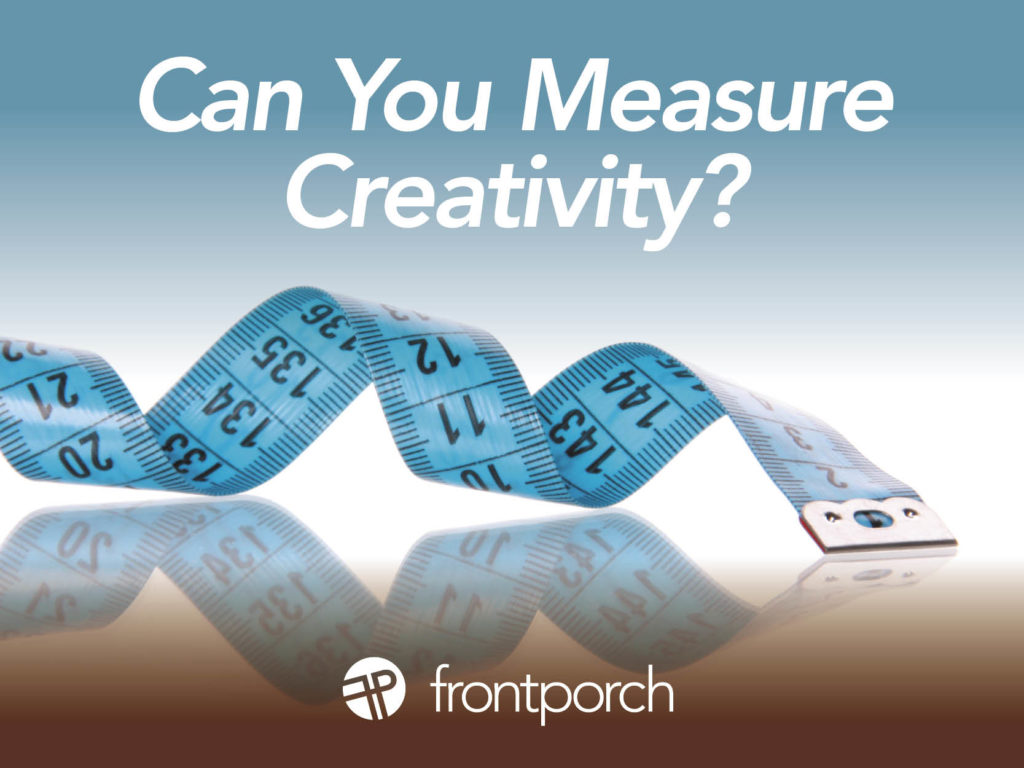
In marketing, innovation in creativity is crucial; but can you measure creativity? How do you know if a logo, ad, website, or campaign is truly successful? Is it just about likes, shares, and clicks, or is there something else we should be measuring? Success and impact can be interpreted in many different ways depending on the goals of the creative.
Defining Success: Start with Clear Goals
Before you establish KPIs (key performance indicators), the most important question to ask is:
“What does success look like for THIS creative project?”
This question should be at the heart of any creative brief. Without a clear definition of success upfront, it’s impossible to measure the effectiveness when you measure creativity.
For some clients, success might mean brand awareness. For others, it could be about changing consumer behavior. Creative work designed to boost sales will have different measures of success compared to one focused on building a brand. Defining goals early on ensures the creative team can craft work that aligns with the client’s expectations and makes measuring success straightforward.
Measure Creativity for Excellence and Business Results
Creatives naturally focus on the artistry behind the work — how visually compelling, emotionally resonant, or innovative it is. And while creativity is essential, it’s important to balance artistic excellence with business objectives. After all, the goal is to create work that not only looks amazing and speaks in brand voice, but also delivers results like lead generation and sales.
Key Metrics for Measuring Creativity Success
Here are some of the key KPIs to look at when measuring creativity:
Brand Awareness Metrics
Impressions and Reach: This tells us how many people saw to the creative. It is important for brand awareness projects, where the goal is to get the brand in front of as many eyes as possible.
Brand Lift Studies: These studies measure the increase in awareness or perception of a brand after exposure to a campaign. They are valuable tools for understanding how well a campaign has boosted brand recognition.
Engagement Metrics
Clicks, Likes, Shares, and Comments: While these metrics are often the most visible, they shouldn’t be the only indicators of success. High engagement shows that the audience is interacting with the content, but it’s important to dig deeper. Are the comments positive? Are the shares coming from your target audience?
Time Spent on Content: Measuring how long users spend interacting with your content, such as watching a video or visiting your website (bounce rate), can give a more meaningful indication of engagement.
Conversion Metrics
Click-Through Rate (CTR): This metric tracks the percentage of users who clicked on a link or call to action (CTA). It’s a good indicator of how well the creative has inspired action.
Conversion Rate: This is the ultimate measure of success focused on driving sales, sign-ups, or other actions. It tells us how many users completed a desired action.
Cost Per Conversion (CPC): For performance-driven campaigns, this metric reveals how efficient it is in driving conversions. A lower CPC means the campaign is delivering results cost-effectively.
Behavioral Change Metrics
Customer Retention and Loyalty: If the goal is to change consumer behavior or build long-term loyalty, metrics like repeat purchases, subscription renewals, or increased usage of a service are essential.
Survey Responses and Brand Sentiment: This analysis (e.g., using social listening tools) can help measure shifts in consumer perception, loyalty, or trust in the brand.
Return on Investment (ROI)
Sales and Revenue Impact: Ultimately, many campaigns are judged by their impact on sales. Calculating the ROI helps determine if the investment in creative development and media spend led to an increase in revenue or profitability.
Attribution Models: It’s crucial to understand which touchpoints in a multi-channel campaign contributed to conversions. Attribution models help allocate credit to different parts of the campaign, giving a clearer picture of which parts are driving success.
The Intangible Impact When You Measure Creativity
Not all success can be measured by numbers. Some of the most important outcomes of creative work are harder to track with traditional metrics. For instance:
- Cultural Relevance: Did the creative become a part of the cultural conversation? Was it referenced in media or among consumers in a way that went above and beyond the initial goals?
- Emotional Resonance: Did the creative evoke the desired emotional response from the audience? Creativity that strikes a deep emotional chord can lead to lasting brand loyalty, even if it’s not immediately measurable in terms of clicks or sales.
Long-Term Impact of Creative: The Bigger Picture
Creative success doesn’t always show up immediately. In many cases, especially with brand-building or perception-changing campaigns, the true impact is felt over time. That’s why it’s important to continue to monitor brand health metrics. Surveys, focus groups, and long-term tracking studies can reveal shifts in brand loyalty, sentiment, and customer behavior that directly correlate with marketing and creative efforts.
Overall, creative work’s goal is to inspire, engage, and ultimately drive action. But it should also contribute to the long-term success of the brand. When measuring creativity with both short-term and long-term impact, we can truly understand the value of creative efforts and continue to refine approaches to deliver even greater results in the future.
